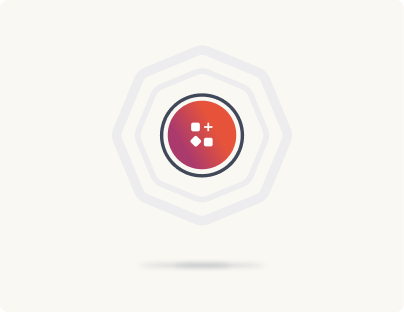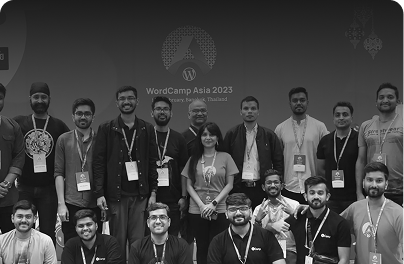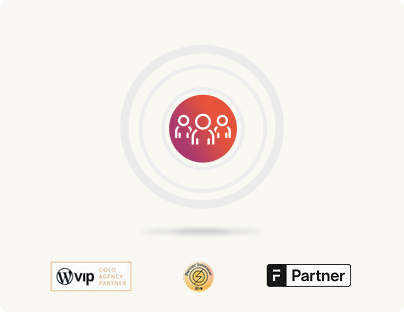Content Creation: Contentful vs headless/hybrid WordPress
Contentful is known for its API-first, structured content management, which gives developers complete control over content delivery. However, this flexibility can sometimes present challenges for non-technical content creators. In contrast, hybrid headless WordPress offers a more balanced solution, providing a familiar content creation interface while still supporting the flexibility of the headless architecture.
In this chapter, we’ll dive into the content creation capabilities of both platforms, comparing their ease of use, flexibility, and ability to meet the diverse needs of enterprise teams.
Let’s talk about Contentful first.
Creating content in Contentful
At its core, Contentful treats all content as modular entities. Developers define custom content types (e.g., “Blog Post,” “Product Page”) with specific fields like text, images, relationships, metadata, and editorial teams populate them as entries.
This structured model is ideal for omnichannel content delivery. You can reuse content fragments across platforms, trigger contextual rendering based on metadata, and maintain centralized control over every field.
But for content creators, the experience can feel abstract, especially without a visual editor or built-in layout control.
Key characteristics of Contentful’s content creation experience
- Structured content models: Every piece of content is treated as a modular entity, defined by custom content types. While this structure allows content to be reused across various channels, it also introduces a level of abstraction that can be challenging for writers to grasp.
- No native WYSIWYG editing: Contentful doesn’t provide a native, visual editor for directly styling or formatting content. Writers and editors must often preview changes using external tools or rely on developers to configure preview environments.
- Contentful Studio: To bridge this gap, Contentful introduced Contentful Studio, a tool that adds a presentation layer for live previews and contextual editing. Studio empowers teams to see how content fits into its final design, making workflows more accessible for writers. However, implementing Studio often requires custom development and configuration, which adds complexity and time to deployment.
Contentful’s structured approach revolves around creating modular, reusable content components for distribution across various platforms.
Here’s Contentful’s content creation workflow
Define your content model
- Developers create structured content types (e.g., Blog Post, Product, Landing Page) in Contentful’s Content Model section.
- Define fields such as text, media, references, and metadata for each content type.
Create and manage entries
- Navigate to the “Content” tab and click Add Entry to select a content type.
- Fill in the predefined fields with content like titles, descriptions, or images.
- Save or publish your entry when ready.
Use Contentful Studio for previews
- Configure Contentful Studio to link your content model with frontend designs.
- Writers can view how their content will appear on different platforms while editing, reducing dependency on developers.
Integrate APIs for delivery
Developers retrieve content using Contentful’s GraphQL or REST APIs and render it on the frontend using frameworks like React, Vue, or Angular.
As you can see, Contentful’s content creation workflows require initial setup by developers (for modeling the content). But this will be true for any headless CMS.
Content creation in Contentful
Content creation in WordPress
Creating content in hybrid/headless WordPress
Hybrid or headless WordPress combines the flexibility of a decoupled architecture with the familiar, intuitive interface of WordPress. While it doesn’t inherently prioritize a structured, API-first model like Contentful, it balances structured content creation with usability, offering a smoother experience for non-technical teams.
Key characteristics of WordPress’s content creation experience in hybrid/headless setups include:
Flexible content modeling with custom post types and fields
Hybrid or headless WordPress supports highly structured content through custom post types, taxonomies, and custom fields (e.g., using plugins like Secure Custom Fields or Metabox). This makes WordPress adaptable to enterprise use cases such as omnichannel content delivery.
Gutenberg: A user-friendly block-based editor
The Gutenberg block editor provides an intuitive, visual interface for content creation. It enables writers to focus on creating content with minimal technical barriers. Custom blocks can also be built for structured content needs.
Note that it does take custom configuration to get Gutenberg to work in a headless setup the way it would in a traditional WordPress installation.
That’s where SnapWP comes in. It’s a structured approach we’ve developed to make Gutenberg work natively in headless environments. With SnapWP, content creators get the editing freedom they’re used to, and developers get structured, predictable data for rendering.
Live preview functionality
In hybrid or headless setups, WordPress’s native live preview capability has to be replaced or extended by integration with frontend frameworks like Next.js or Gatsby, which offer tailored preview environments.
Modular, reusable content components
Hybrid/headless WordPress supports modular content through custom fields and taxonomies, allowing enterprises to create reusable components that work across platforms.
Developer extensibility meets user-friendly workflows
Hybrid WordPress strikes a balance between developer flexibility and ease of use for content teams. Developers can set up robust APIs and custom workflows, while writers enjoy WordPress’s familiar interface.
Here’s how content workflows work in headless/hybrid WordPress:
1. Content modeling (the initial setup)
Before content creation begins, developers define the structure of the content using:
- Custom post types: For categorizing content into distinct types (e.g., blogs, products, events).
- Custom taxonomies: For organizing content into hierarchical or non-hierarchical groups.
- Custom fields: For adding specific metadata or structured content elements (e.g., product specifications, SEO metadata). Plugins like Advanced Custom Fields (ACF) simplify this process.
Once content modeling is done, it’s integrated with the frontend(s) via REST API or GraphQL.
2. Creating content in WordPress
Once the structure is in place, content creators use the WordPress admin interface to add content. Writers create pages or posts using Gutenberg’s block-based interface. Predefined custom blocks or reusable blocks allow writers to create structured, visually rich content without needing technical knowledge.
3. Previewing content (hybrid/headless setup)
While WordPress’s default live preview is unavailable in headless implementations, integrations with tools like Next.js, Gatsby, or custom frontend applications make previewing possible. These integrations mimic live preview functionality, bridging the gap between backend editing and frontend presentation.
Once content is finalized, writers publish it in WordPress. The published content is then delivered to various platforms (web, mobile apps, digital signage) via APIs. Developers can implement hooks to trigger frontend builds or updates, ensuring real-time content delivery.
Contentful vs headless/hybrid WordPress: The final verdict
When it comes to content creation, hybrid headless WordPress offers a significant advantage over Contentful by providing a platform that supports both content creators and developers. Content creators benefit from WordPress’s familiar, intuitive interface, while developers can leverage its flexible APIs to build custom frontends. This balance between technical flexibility and user-friendly workflows makes hybrid/headless WordPress an ideal solution for enterprises requiring robust content creation capabilities without alienating non-technical teams.







